Industrial Revolution (1800’s-1940’s)
41 The Industrial Revolution and STS
Cassia Michael; Madysun Green; Gracie Travis; Robert Ayers; Amelia Godolphin; Catherine Denaux; Matt Erickson; Anthony Hernandez; and Mason Nobles
Introduction
The Industrial Revolution occurred from the 1880s to the mid-1940s, and it was a period of great innovation and discoveries that launched society forward. It began in Great Britain and many of the inventions during this time period were created by British inventors as Britain was the world’s leading commercial nation. It led to the invention of industrial machines in production, it led to a new, safer way to do mining, and it fostered innovation in healthcare with the creation of the iron lung. Not only was it a time of great innovation, but it was also a time of great growth with an unprecedented rise in the world’s population. In this chapter you will learn how every life was touched in some way by this revolution, and the overall standard of living became much better than it ever had been. It resulted in a change in the way most people lived as society shifted from being dominated by agriculture to being industrialized and urban. These changes in society were mostly the result of the great leaps that inventors were able to make in regards to technology. This chapter relates to STS, because it shows how great things can come from developments in society, science and technology as a whole. The Industrial Revolution set the ball rolling for many of our modes of transportation today, such as planes, high-speed trains, cars and even the new modes of transportation that continue to be developed, to benefit our society as a whole. The Industrial Revolution was a period of rapid technological innovation that fundamentally changed daily life, merging technology with industry. Although technological change began earlier, this era uniquely combined technical advances with the rise of industrial-scale production, reshaping nearly every sector.
The steam engine
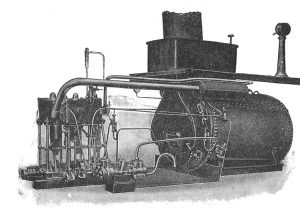
One of the major innovations during the Industrial Revolution was the steam engine. The steam engine went through many different incarnations over time before it reached its most beneficial form. While the science surrounding the steam engine and the improvement of the steam engine itself moved rapidly during the Industrial Revolution, there were some barriers to its improvement such as the new patent system and lack of resources (such as money). The three main versions of the steam engine were the ones created by Thomas Savery, Thomas Newcomen, and James Watt. The creation and improvement of the steam engine was a driving factor of the Industrial Revolution leading to the creation of the first true industrial machines used in production and transportation that were a defining part of the period.
Thomas Savery, an English engineer, and inventor created the first functional version of the steam engine. He was inspired to create the steam engine when examining the difficult problem of pumping water out of coal mines. Savery’s version was a vast improvement on previous methods, which were slow and expensive, he patented this design in 1698 for 14 years (Lira, 2013). This design was used to “raise water from mines by suction produced from condensing steam” (Britannica, 2019). While this version was much better than previous versions, it still had multiple shortcomings that limited its effectiveness. This design was only able to draw water from shallow depths and the use of steam pressure to expel the water that had been drawn into the tank. In 1699, the British Parliament enacted the Fire Engine Act that extended Savery’s patent on all engines that raised water by fire to 21 years. While ultimately patents were beneficial overall in fostering innovation during the Industrial Revolution (Mokyr, 2009), unfortunately this patent slowed down the improvement of the steam engine by preventing other inventors from producing their own work.
One of the inventors who was limited by the patent that Savery had on this device was Thomas Newcomen. Newcomen was the first to create a successful steam engine that could be used to pump water out of mines in 1712. He attempted to work on this design for 10 years, but once he was successful, he was prevented from selling his design by Savery’s patent. If he wanted to be able to profit from his work, he was forced to collaborate with Savery. Newcomen’s design had many mechanical differences; it eliminated the need for steam pressure, and it used the vacuum concept in a different, more effective manner. Newcomen’s engine was the first to be considered an atmospheric engine, named so “because the greatest steam pressure used is near atmospheric pressure” (Lira, 2013). His design gave access to mines which could not have been worked at all previously” (Thurston, 1878). Newcomen’s design was the best design of its kind for 60 years, and it was used extensively until someone discovered how to fix its inefficiencies.
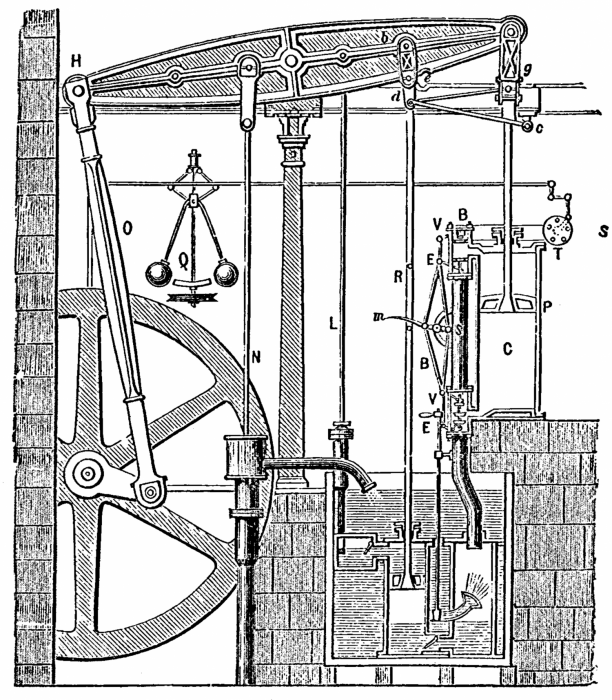
The engineer who was able to further improve Newcomen’s superior design was Scottish inventor James Watt who discovered inefficiencies in Newcomen’s version and found a way to fix them. His breakthrough development was that he used a separate condenser, which did not require as much energy (Lira, 2013). Watt filed a patent in 1768 and was able to manufacture a small test engine. It took 11 years before Watt was able to effectively implement his findings because he lacked the funding to accomplish it by himself. Luckily, Watt was able to collaborate with Matthew Boulton who provided the finances needed, and the Watt steam engine was implemented in 1776. Watt and Boulton found uses for the steam engine beyond coal mines and in 1781 implemented design changes that took the technology indoors where it was used in operating mills and textile factories. The Watt steam engine did not reach its final form until 1790 with the installation of a pressure gauge. In 1794, Watt established the firm of Boulton and Watt to produce steam engines competitively because the patents were set to expire in 1800 (Britannica, 2019). Watt’s steam engine was an important piece of the Industrial Revolution as it improved previous technology rapidly and expanded the steam engine into more areas than ever before.
Steam power allowed for increased effectiveness and efficiency in coal mining, production, and transportation. The effect the steam engine had led to further improvements beyond those stated; it necessitated the creation of the study of thermodynamics, it allowed for the improvement of tools for measuring heat and weight, and it resulted in the creation of a standardized temperature scale (Johnson, 2016). Without those things, we would not have some of the current technologies that make our lives much easier. The journey of the steam engine to its final, most efficient form was a long one slowed by issues with patents and lack of funds, but it was a fundamental part of the Industrial Revolution and we would not be where we are today without it.
Many people have the misconception that James Watt invented the steam engine, however, he was the one who reinvented it. Watt was an instrument mechanic at the University of Glasgow, where he was inspired by the steam engine’s lack of efficiency. Watt recognized that Newcomen’s steam engine wasted a large amount of energy, by having to constantly be reheated and cooled. He refined the traditional steam engine by adding a separate cooling condenser, which allowed the steam to remain hot at all times. This separate cooling condenser removed the need for the cylinder’s temperature to be readjusted. Although Watt was an educated man, he was not a wealthy one. At the time, his idea was funded by Matthew Boulton. His financial constraints and obligations to Boulton were what pushed Watt to redesign and commercialize the steam engine. Ultimately, Watt reinvented the steam engine by introducing a separate cooling condenser. This cooling condenser not only made the steam engine more reliable and efficient but also allowed it to be located anywhere. This system fueled the Industrial Revolution.
Before steam power was harnessed for energy, water was removed from deep mines using buckets on a pulley system. However, water could only be removed from shallow depths (Lira, 2013). Newcomen and others saw this issue and isolated atmospheric pressure to expel water from mines. For many years, Newcomen’s steam engine was idealized and considered one of the best technologies of its time. However, Watt saw the flaws in this steam engine, which later led him to reinvent the way it worked. Newcomen’s steam engine required a large amount of energy in order to pump water from mines. This water pump was driven by a part called the steam cylinder, which created a partial vacuum. The steam cylinder simply created a pressure gradient when filled with steam, causing water to be lifted from mines. However, the steam cylinder in Newcomen’s engine needed to be heated and cooled repeatedly. This need to reheat and cool the cylinder resulted in a large amount of wasted energy and thermal stress (Lira, 2013). Thermal stress is caused by consistent temperature change, which can cause deformation in structure (“Thermal Stress”, 2007). This deformation could cause the machine to malfunction. In 1791, a newspaper released an article stating that a steam engine had caught on fire and exploded, which most likely was due to thermal stress (Times, 1791). There are many articles like this, including one from 1819, saying the steam engine caused a “melancholy catastrophe,” resulting in death and severe injury (Times, 1819). Besides the general inefficiencies in Newcomen’s steam engine, Watt also saw the danger of faulty machinery.
It took Watt nearly eleven years to create the cooling condenser, and it wasn’t until he had the financial resources that he was able to see the fruits of his labor. Watt’s steam engine worked on the same pressure gradient that Newcomen’s did, but the steam cylinder remained hot at all times (Lira, 2013). He created a separate compartment that was permanently kept cool, while the cylinder remained hot. Since the cylinder remained hot it no longer required or lost as much energy and became thermally efficient (Palermo, 2014). By becoming more efficient and burning less coal, it meant that steam engines could be used elsewhere, such as factories or mills. With the addition of the cooling condenser, the steam cylinder doubled its power (Russel, 2019). However, Watt did not stop at the cooling condenser. He continued to work with Boulton for many years tinkering the machine. Watt’s invention of the cooling condenser revolutionized this time period, as he saw a need for improvement. Through his obligation to Boulton and pressure from society, Watt reinvented the steam engine inspiring many subsequent inventions. Many argue that Watt’s improvements to the steam engine triggered the Industrial Revolution. While this cannot be certain, his ideology and innovation certainly impacted this time. William Rosen states that “The most important invention of the Industrial Revolution was invention itself” (Rosen, 2010). Watt’s steam engine inspired multiple subsequent steam locomotive machinery and high-pressure engines. He greatly impacted society, and many considered him one of the greatest inventors of all time. A news article in 1824 states that his work was so impressive, that a city in England considered building a monument after him (Times, 1824). Although Watt’s engine was invented from innovation and curiosity, it would not have been successful without science. He used many general principles from physics, such as creating a vacuum, thermal energy, and understanding pressure gradients. Although Watt was not the first to invent these principles and systems, he wouldn’t have been able to improve the engine without understanding how they worked. Watt created the cooling condenser technology, but without a scientific background, he would not have been successful.
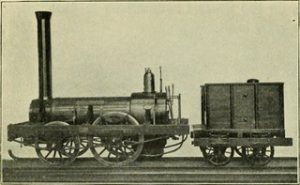
The Watt Steam Engine was one of the most profound technologies of the Industrial Revolution and the catalyst for numerous improvements in efficiency and productivity in one of the key businesses of this era: mining. The greatest benefactor of Watt’s invention was the mining industry, who immediately felt the benefits through the increased capability to pump water from its mines, allowing for greater coal and other metal extraction. Mining was one of the key industries of the Industrial era; vast quantities of coal were needed to power countless steam engines and furnaces, along with a wide array of other metals and minerals required by a rapidly evolving economy.
During the late 18th century and early 19th century, coal mining was one of the largest industries in Great Britain and constantly was in search of new and improved methods to increase their mining yields. Watt’s ingenious invention of a separate cooling condenser vastly increased the efficiency of steam engines during this time, resulting in up to a 100% increase in productivity compared to the Newcomen engine, which proved to be very valuable when pumping water from British and European coal mines. In fact, it is estimated that upwards of 450 Watt Steam Engines were in use by the close of the 18th Century, and while this may seem like a small number, only 10 of Newcomen’s engines were recorded to be in use by this time for comparison. (Kanefsky and Robey, 1980) The vast majority of these steam engines were used for coal mining purposes, although Watt’s steam engine did find success in more-strenuous metal mines and British textile factories.
Many regard the Watt Steam Engine as “the single most important technological factor in bringing about the huge economic and social changes that we now call the Industrial Revolution.” Despite the fact Watt’s engine was generally not a part of the average person’s daily life, the widespread applications of Watt’s work benefitted all aspects of society in the early Industrial Era. Many regard the Watt Steam Engine as “the single most important technological factor in bringing about the huge economic and social changes that we now call the Industrial Revolution.” (Henderson, 2013) It was during this period of history that businesses and individuals began to transition from wood-burning to coal-burning as their main source of heating and energy. Coal stoves and furnaces burned hotter, required less fuel, and were cheaper compared to wood-burning stoves, and they were soon found throughout 19th Century homes in Great Britain. Consequently, the increased availability of coal resulting from Watt’s engine had a direct benefit on the lives of nearly every individual in the Industrial Revolution. Although Watt’s engine was not the one found early locomotives and steamships, his work made significant breakthroughs in the mechanics of steam power, paving the way for later improvements and applications of his own engine. As an 1852 article from a British publication “Leisure Hour” highlights, “there is no evidence that the idea of a rail ever entered the mind of Watt in connection with his locomotive engine… But what are now the achievements of railway transit!” (Watt and the Steam Engine, 1855, p. 118) This historical passage provides a brief insight into the direct and indirect effects Watt’s work had on Industrial Era society. Watt’s invention of his steam engine was a watershed moment of the Industrial Revolution; his innovations allowed for huge progress in coal mining, which in turn benefited almost every business and household in Great Britain. Without Watt’s genius, one might question whether the Industrial Revolution would’ve been as important to society and history as it is today.
Coal mining was one of the most important industries of this era and Watt’s engine greatly contributed to the increased efficiency and output mining. It is unlikely that anyone did not benefit from the growth of coal mining during this period as it was a cheaper and better form of fuel for homes, businesses, and factories, further underlining Watt’s Steam Engine as being the catalyst of the Industrial Revolution.
science
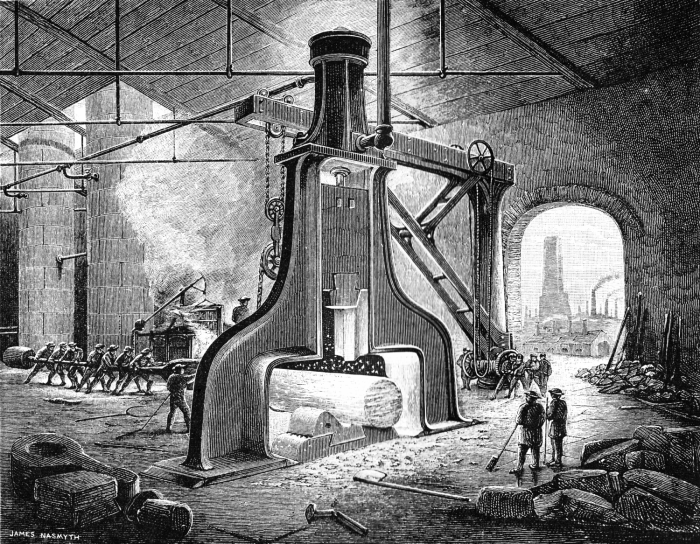
Science in the Industrial Revolution was one, if not the, leading factor to technological advancements during the time. Scientists as a whole began to get a better grasp of how the world worked, including how to harness various energies and turn them into machines that eased processes that were considered difficult or even impossible before. The utmost important discovery during this time was the discovery of thermodynamics, which allowed for the invention of all new machinery (Cardwell, 1971). Science was the driving factor of the Industrial Revolution and the discoveries during the time allowed for inventors and technologists to have a whole new approach in their technological creations, advancing society to a more modern era, affecting the course of both science and technology for the indefinite future.
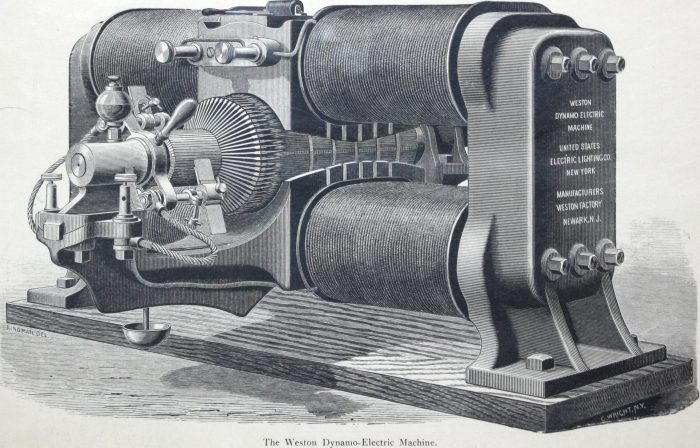
During the Industrial Revolution era, there were many scientists focused on new energy sources such as steam, electricity, and metals (Grada, 2016). It is thought by many, that science is actually what started the Industrial Revolution. The steam engine invented by Thomas Savery and Benjamin Franklin’s discovery of electricity in the mid-1700s were some of the greatest discoveries/inventions for mankind. Both of these discoveries led to one of the most important scientific discoveries made, that being thermodynamics. In addition to thermodynamics, both metallurgy and chemistry had a big part in the industrial revolution (Musson, 1994). These sciences were used to create many technologies, although one important invention was the electric dynamo (a small electric generator) (Williams, 2018). This device was simple, as it was just a small copper wheel that rotated between magnets to create a small amount of electricity. Although it sounds insignificant, this device was the starting point for many if not all electrical devices throughout the Industrial Revolution and through today.
Many engineers and inventors used Newtonian textbooks to develop new technologies during this time period (Grada, 2016). In addition, the entirely new sciences provoked different ways to create new goods, receive goods, and ultimately advanced trading and technological development to a whole new level. One major discovery was thermodynamics. Thermodynamics allowed for the creation of new machine tools that led to much better thus led to new machinery and ways to create/harness new energies (Williams, 2018).
The new sciences that led to new technologies affected society in many ways. From helping average citizens get electricity, transportation, jobs, and many other aspects. The Industrial Revolution was a peaking point for many civilians. Although the concept was too good to be true many scientists and inventors became too rich and powerful for their own good, ultimately abusing the average joe and the working conditions that they were put in. In addition, science affected society by bringing forth many new sciences that continue to change how the world is seen today, from thermodynamics to the founding of modern biology, to advanced chemistry and metallurgy.
Ultimately, the “Industrial Revolution” is a very diverse era in terms of science and technology. Science was one of the most important factors at the time, as it was leading society towards what we know today. Some of the most important inventions were created during this time that we still use today. The first revolution was started due to the many extremely important scientific discoveries made, while the second was the effect of those sciences and how they could be used to create steel, use electricity in more effective ways, and even began the automobile industry (Industrial Revolution, n.d.). It wasn’t until the early 1800s that science really took off, causing a chain reaction of science to technology that continues to this present day.
Child labor
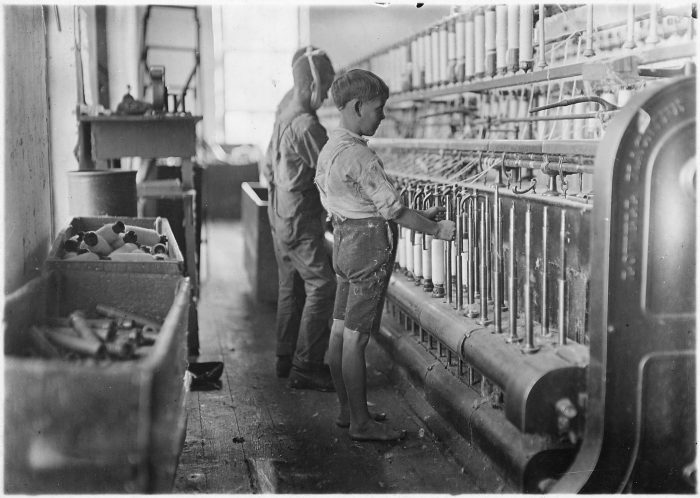
New developments and discoveries, such as the steam engine, helped pave the way for economies and societies across the world to transform into global superpowers through the Industrial Revolution. While it brought many job opportunities, the Industrial Revolution also brought new workers: children. Children were used as workers in factories and mines because their size allowed them to move into places that adults couldn’t fit (“Child Labor,” 2009). During the Industrial Revolution, advancements in technology drove the progression of politics in society and social reform movements, primarily those around child labor laws.
For many of the employers during the industrialization period, children were seen as an asset, therefore they could be hired for lower wages and used for jobs that adults couldn’t do or for simpler tasks. Many of the children working at this time were from families in poverty, therefore many of them were made to work to help support their families, but that didn’t come without cost. Industrialists began to exploit children from lower working classes to work in unsatisfactory conditions such as working on machinery in factories and even breaking up coal at the mines. According to the census conducted by Smee and Baxter in 1841 and 1861, “Baxter’s analysis of manual occupations showed that only about forty percent of workers in manufacturing were men, the rest were women and children. Hence, total employment in manufacturing was 2.5 times male employment with the additions being women and children” (Allen, 2018)
As people and politicians in society began to view the impact child labor was having on children, many believed that it was time for a change. The three laws that were enacted and most impacted the employment of children in the textile industry were the Cotton Factories Regulation Act of 1819, which set the minimum working age at 9 and maximum working hours at 12; the Regulation of Child Labor Law of 1833, which established paid inspectors to enforce the laws; and the Ten Hours Bill of 1847, which limited working hours to 10 for children and women (Tuttle, 2001). These laws were enacted to prevent and stop the harm working in hazardous conditions were causing to children forced to work; such as an incident reported in the London Times Newspaper describing black lung and respiratory diseases emerging in children who had worked in coal mines, and a death caused by “a blow to the neck, followed by disease from the unkept conditions in the manufactory” in a 12-year old boy (“British Library,” 1833). Following the impact these laws made on the push against child labor, many more acts have been put into place detailing the regulations and conditions that must be met in the workplace, and with the accompaniment of technological advancements, child labor laws have evolved and bettered with society.
The world wars
The Industrial Revolution was an era marked by a rapid increase in inventions and technological feats. It was a time during which the roots of entertainment, convenience, and communications technologies first appeared. But why then? How did so many innovations stem from one of the most tumultuous times in human history? Perhaps the key to these innovations was the instability and rapid changes society faced. The technological environment of the Industrial Revolution was shaped by vast socioeconomic forces, in particular, the wars which took place. This text discusses the massive effects the World Wars had on the technology in the Industrial Revolution.
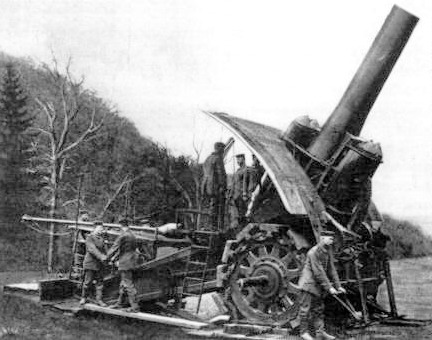
The early 20th century was marked by WW1 and the Roaring 20s. Though the USA tried to avoid involvement, they were pulled in by the needs of their allies. This war marks the true beginning of Industrial Warfare. Troops were conscripted via draft laws, and European civilian areas were often the targets for bombings. Industrialization changed the face of warfare, moving it from visual range person to person combat to the use of long-range artillery and chemical weapons for indiscriminate destruction. Innovations to try to break the stalemate in the trenches included machine guns, barbed wire, deadly chemicals, and hidden landmines. Eventually, the introduction of the tank blew everything else away and secured the end of the war. Other technologies included planes, early submarines, and the utilization of communication technology, including the newly introduced radio for communications between air, land, and sea, and telegraph lines rolled out into the trenches for instantaneous remote commands (3).

The Roaring 20s followed World War One. Of course, there was a huge economic boom, but another huge societal factor was that the people of that era had just witnessed the most gruesome war the world had ever seen and must have felt like they had survived an apocalypse. Knowing these truly horrible circumstances could happen gave people the mindset of living each day like it would be their last- no holds barred and no expenses spared. This mindset made the rise of entertainment and convenience technologies possible. This included everything from using radio for entertainment and news broadcasts to early iterations of television. In fact, The first radio news broadcast occurred on August 31st, 1920 (2). Technology also included the introduction of the Phonograph and refrigerator, as well as the popularization of the Washing machine, Electric Irons, and Automobiles (1).
Though impressive, the boom was short-lived, and as life returned to “normal”, the bubble the economy was riding burst and the world was plunged into the great depression. During the depression, President Franklin Roosevelt put the new deal in place to help stimulate the economy by creating jobs. This included huge projects such as the Tennessee Valley Authority and the construction of the Hoover Dam, which unified and expanded the electrical grid and introduced new hydroelectric power plants. An interesting note is that many artisans were employed and were tasked with making the insides of these rather industrial buildings beautiful- giving them a form that seemed to clash with their function, and leaving relics of beauty from an undeniably terrible era (4).
World War 2 began in 1939 and showed much of the same rapid technological growth as World War 1. This included the refinement of war machines- such as super-tanks and better ships. Huge research labs, such as the Oak Ridge National Laboratory, were dedicated to wartime research in new technologies, such as RADAR and eventually nuclear weaponry. An interesting factor in the war was the continued development of technology in the civilian sector. Movie theaters and TV stations became popular, and movies often followed the themes present in the war and were often used as propaganda. Radio and Print media were also used to spread propaganda and unified the country into a wartime mindset. Wartime research from the aforementioned labs eventually found its way into the public sector in inventions such as the Microwave, which applied RADAR technology(3). The 19th and 20th centuries marked the start of the exponential growth of convenience and communications technology we see today. It is likely that the rise in this technology was originally driven by the wars of the era, and the socioeconomic forces they exerted over the consumers and inventors of the Industrial Revolution.
religion
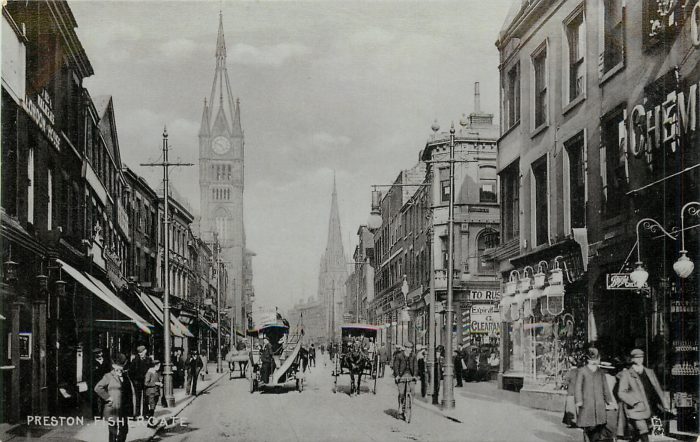
The Industrial Revolution was a time of new ideas, new inventions, and old traditions all grappling for a foothold among a changing and growing society. It began in Europe and eventually spread to North America at the beginning of the 1800s. Prior to the Industrial Revolution products were typically produced on a small scale, however, the introduction of “profit motive” spawned the big factories and mass production practices that come to mind when thinking of this time period. The idea of profit motive was that production should be more efficient, creating the most amount of product for the least amount of time and money. During the Industrial Revolution, religion was used as a tool to justify profit motive and fuel the growth of new technology, which in turn helped to spread mass preaching practices and consequently served to further the reach of the religion.
Religion in the Industrial Revolution, just like everything else, was changing. Previously the church was still connected to the government and they functioned side by side, legalism intertwining with morality. However, during these changing times, people began to see an increased desire to make religion a personal connection and introduce the separation of church and state. Alongside this desire was the desire to also remove the heavy hand of the government from the economy as well and create a laissez-fair society. This gave the people more freedom to pursue their own technological inventions and directly profit from them, which as stated before, appealed to the idea of profit motive. Religion fueled the profit motive directly, specifically of those people looking to make use of their newfound personal reasonability and connection to their religion. The way they did this was to spread their message to as many people as possible (through mass preaching), which was enabled by using increasingly available and novel technology.
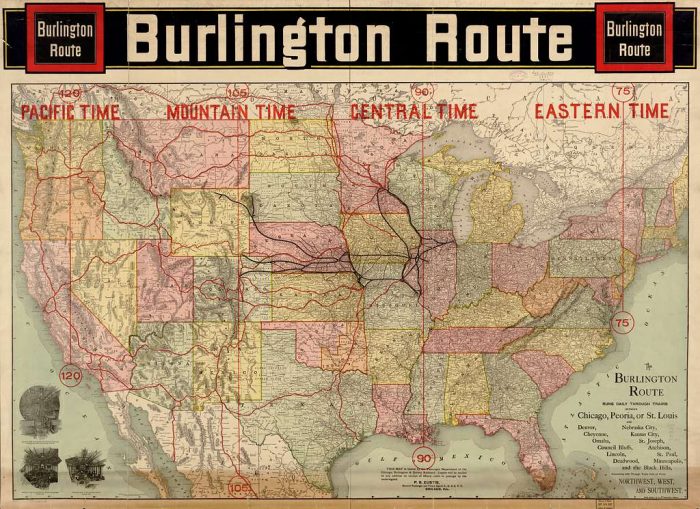
Production was booming and new ideas were introduced every day but the main advances that helped to fuel mass preaching were new forms of transportation and communication. The first to be invented in 1807 was the steam engine. No longer did people have to spend days sailing, the steam engine had revolutionized water travel. Next came the railroad, which caused new towns to spring up. New places to evangelize. The more modes of travel, the more ways missionaries had to spread their message to the people. Finally, we see the invention of the car in 1885 (Lum, 2019). This was hugely important, as it was not public transportation, but would eventually be for use by a sole individual. These new methods of transportation technology connected humans in ways never before seen in society.
Overall, this had many effects on society as a whole. Literacy rates increased as general education did, this meant that people did not have to only hear the Bible read to them, they could now read it for themselves. Increased religious activity and the increased demand for factory workers kept citizens busy. The working class began to abstain from their usual habits of drinking and “loose living” due to the increased emphasis on hard work and morality (Faler, 1974). Overall, church attendance saw an increase in their numbers during this time, however, a small percentage of people took this time of increased freedom to renounce their faith or simply did not have as much time due to long work shifts and less free time.
The wool combing machine
The Industrial Revolution was a very significant time in our world’s timeline. A lot of things changed. Many inventions were introduced that gave people opportunities for new jobs or made their jobs easier and more enjoyable. Some of the ideas did not work well, and others, of course, worked very well and made the textile industry during the Industrial Revolution more successful, including the Wool Combing Machine which sped-up the process of getting wool out of the factories, to be further processed before making its way into products.
Wool has dated back to pre-10,000 BC and has been used as inputs for various items of clothing such as shirts, jeans, socks, etc. Before the machine, the British would raise the sheep, shear them, and sell their coats of fur to Flemish (Belgiuns, mainly), who acquired the skills necessary to process the wool, and send it back to the British to be utilized for clothing. Wool was spun and woven in northern European tribes, including Mesopotamia. The main reason wool was/is used for clothing is because they were comfortable for any seasons of the year. Wool is also used for cushions under the fabric of seats and sofas. Early on before the process even really started, according to the “International Wool Textile Organization” based in Belgium, because sheep and their wool were such a popular driving force during the 15th century through the 18th century, and a death penalty was placed on any imports of the goods up until 1786 when they ended it.
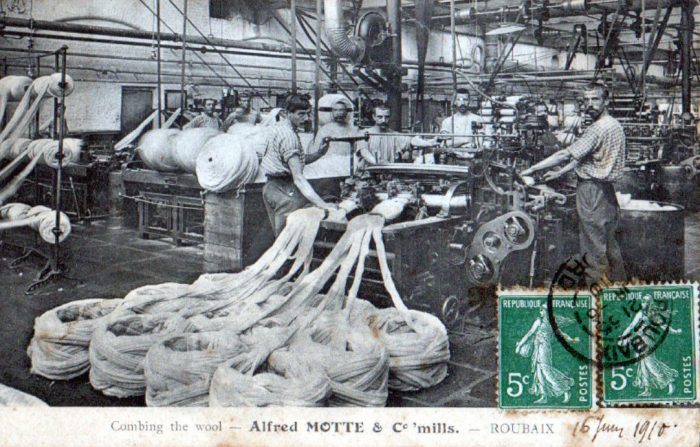
The process for getting wool prepared for use took a prolonged time, continuously. The invention of one of the most significant machines was introduced: the Wool Combing Machine. The man behind the machine is known as Edmund Cartwright. Edmund Cartwright was born in 1743, on April 24th in England, and in 1790 the invention was created and patented. This machine made the process of getting the wool ready for use very quickly and efficiently. The process that the wool went through in the combing machine, arrange the cotton by the length of the fibers and lay them parallel so it was easier to be placed into products, upon further processing steps.
The Wool Combing Machine was very successful and changed the way business was run forever. The machine made its way to being used in factories, allowing people into factories more, and giving them more job opportunities. The process of the wool industry running quickly, smoother and more efficiently made life in the workforce, inside factories more enjoyable with how much easier, efficient and faster it was to get the job done. Made the consumers happy with receiving excellent quality goods at a faster rate. Also, to shed more light on how the Wool Combing Machine was successful, a married couple by the name of John and Elizabeth MacArthur built and started their own wool factory business with the machine. During the early 1800s, the couple utilized a rare breed of Spanish sheep, which made it even better for their business. The business did not require much human labor to operate. His wife, Elizabeth, managed many operations in the business, including family estates, picking out rams and other breeding to make the pack better. John used his great abilities to promote his business, while his wife used her abilities to produce their wool production. John was also a politician so you can say he had a way with words. Their wool business mostly ran by the two of them which made it easier for them to maintain and ensure its success.
Many ideas during the Industrial Revolution were discussed and attempted; some failed, but some had an impact and changed the shape of the world and is still leading the way today. Factories ran and operated nonstop, day and night, and with the Wool Combing Machine being operated in some of them. Like the industrial business that John and Elizabeth MacArthur started and maintained on their own. The Wool Combing Machine was one of the machines that gave people in this world new and fulfilling opportunities that made jobs more enjoyable. They were able to get wool arranged for further processing much quicker, easier, and more efficiently. The Wool Combing Machine is one of the most important ideas/inventions in the Industrial Revolution that worked.
This time gave way for new ideas, monumental inventions, and need to progress. The Industrial Revolution had many new developments and discoveries, such as and allowing economies and societies around the world to transform into global superpowers. Through science, technology, politics, religion, ideas that worked and those that failed; and even through events that impacted the growth of society, the Industrial Era touched every aspect of life.
Chapter Questions
- True or False: James Watt’s steam engine was an invention based on previous ideas and technological advancements dating back to the 1600’s.
- True or False: Thomas Newcomen invented the original steam engine in 1712 for mining purposes.
- Multiple Choice: What were some other impacts of Watt’s steam engine, besides efficiency of production?
A) Communication and transportation
B) Increased labor wages
C) Safer working conditions - Multiple Choice: What factor may have been most likely to cause church attendance to decrease during the Industrial Revolution despite growing missionary efforts?
A) Workers spent more time drinking and at bars after work
B) Because factory work was becoming more common people worked longer shifts and did not have as much free time for church attendance
C) The church was not as active in engaging the lower classes and focused only on upper classes
D) Because more people were out witnessing there were less people present in church - Short Answer: Name the three most significant versions of the steam engine that drove the industrial revolution.
- Short Answer: Name the three laws which most impacted the employment of children in the textile industry during the Industrial Revolution.
- Short Answer: Explain the way that the Industrial Revolution allowed for changes in the idea of Religion for the people of this time.
References
Allen, R. C. (2018, February 12). Class structure and inequality during the industrial revolution: lessons from Englands social tables, 1688–1867. Retrieved from https://onlinelibrary.wiley.com/doi/full/10.1111/ehr.12661
Cardwell, D. S. L., Watt, & Clausius. (1971). From Watt to Clausius. London: Heinemann.
Carr, A. (2019, December 1). John Macarthur (wool pioneer). Retrieved February 18, 2020, from https://en.wikipedia.org/wiki/John_Macarthur_(wool_pioneer)#Business_interests
Child Labor. (2009, October 27). Retrieved from https://www.history.com/topics/industrial-revolution/child-labor
Davids, C. A. (2013). Religion, technology, and the great and little divergences: China and Europe compared, c. 700-1800. Leiden: Brill
DEATH OF A FACTORY CHILD. (1833, October 19). Lancaster Gazetter. Retrieved from https://link-gale-com.libproxy.clemson.edu/apps/doc/R3214557771/GDCS?u=clemsonu_main&sid=GDCS&xid=23605219
Ensminger, M. E. (1964). Sheep and wool science. Sheep and wool science., (Edn 3).
Faler, P. (1974) Cultural aspects of the industrial revolution: Lynn, Massachusetts, shoemakers and industrial morality, 1826–1860 , Labor History, 15:3, 367-394, DOI: 10.1080/00236567408584301
Gráda, C. (2016). Did Science Cause the Industrial Revolution? Journal of Economic Literature, 54(1), 224-239. Retrieved January 21, 2020, from www.jstor.org/stable/43932447
Henderson, L. undefined. (2013). Milestones of Science and Technology: Making the Modern World. Independent Publishers Group.
History of radio. (2020, March 12). Retrieved March 24, 2020, from https://en.wikipedia.org/wiki/History_of_radio
History of Wool. (n.d.). Retrieved February 18, 2020, from https://www.iwto.org/history-wool
Industrial Revolution. (n.d.). Retrieved from https://www.google.com/amp/s/www.history.com/.amp/topics/industrial-revolution/industrial-revolution
Industrial Revolution and Technology. (n.d.-a). Retrieved from https://education.nationalgeographic.org/resource/industrial-revolution-and-technology/
Industrial warfare. (2020, February 9). Retrieved February 16, 2020, from https://en.wikipedia.org/wiki/Industrial_warfare
James Watt And the Separate Condenser. (2019, January 5). Science Museum. Retrieved from https://blog.sciencemuseum.org.uk/james-watt-and-the-separate-condenser/
Johnson, S. (2016). How we got to now. Place of publication not identified: Riverhead Books.
Kanefsky, J., & Robey, J. (1980). Steam Engines in 18th-Century Britain: A Quantitative Assessment. Technology and Culture, 21(2), 161. doi: 10.2307/3103337
Kingsford, P. W. (2020, January 15). James Watt. Retrieved from https://www.britannica.com/biography/James-Watt
Lira, C. (2013, May 21) Brief History of the Steam Engine. Retrieved February 25, 2020, from https://www.egr.msu.edu/~lira/supp/steam/.
Lum, H. C. (2019). Critical issues impacting Science, Technology, Society (STS) and our future. Hershey, PA, USA: IGI Global/ Information Science Reference (an imprint of IGI Global)
Martin, B. (n.d.) Science and Faith: The Industrial Revolution (late 18th-19th Centuries). Explorations in Life, Theology, and Creation. Retrieved from http://rossway.net/science-and-faith-the-industrial-revolution/
MELANCHOLY CATASTROPHE IN THE BOROUGH. -Last evening, about six o’clock, the borough of Southwark was. (1819, April 28). Times, p. 3. Retrieved from https://link-gale-com.libproxy.clemson.edu/apps/doc/CS51397788/TTDA?u=clemsonu_main&sid=TTDA&xid=9f02d8a4
Mokyr, J. (2009). Intellectual Property Rights, the Industrial Revolution, and the Beginnings of Modern Economic Growth. American Economic Review, 99(2), 349–355. doi: 10.1257/aer.99.2.349.
Monument to Mr. Watt. (1824, June 19). Times, p. 6. Retrieved from https://link-gale-com.libproxy.clemson.edu/apps/doc/CS100945619/TTDA?u=clemsonu_main&sid=TTDA&xid=6cd20fab
Musson, A. E., & Robinson, E. (1994). Science and technology in the Industrial Revolution. New York, NY: Gordon and Breach.
New Deal. (2020, March 24). Wikipedia. Retrieved from https://en.wikipedia.org/wiki/New_Deal#Public_works
News in Brief. (1791, May 2). Times. p. 3. Retrieved from https://go-gale-com.libproxy.clemson.edu/ps/i.do?p=TTDA&u=clemsonu_main&id=GALE%7CCS51383458&v=2.1&it=r&sid=TTDA&asid=e14e9f60
Nuvolari, A., & Verspagen, B. (2009). Technical choice, innovation, and British steam engineering, 1800-501. The Economic History Review, 62(3), 685–710. doi: 10.1111/j.1468-0289.2009.00472.x
Schwab, K., & Georgetown University. (n.d.). Welcoming Faith in the Fourth Industrial Revolution. Retrieved from https://berkleycenter.georgetown.edu/responses/welcoming-faith-in-the-fourth-industrial-revolution
Rosen, W. (2010). The most powerful idea in the world: A story of steam, industry, and invention. Random House.
Simpson, M. (2019, December 20). Industrial Revolution in Australia – impact on the wool industry. Museum of Applied Arts and Sciences. Retrieved February 12, 2020, from https://maas.museum/inside-the-collection/2016/03/31/industrial-revolution-wool/
Smiles, S. (1865). Smiles, S. (2019). Lives of Boulton and Watt. Principally from the Original Soho Mss: Comprising also a history of the invention and introduction of the steam engine. Good Press.
Steam Engine History. (2013, May 21). Brief Steam Engine History Retrieved from https://www.egr.msu.edu/~lira/supp/steam/
Steam engine. (2019, May 2). Encyclopaedia Britannica. Retrieved from https://www.britannica.com/technology/steam-engine.
The Roaring Twenties History. (2010, April 14) . Retrieved from https://www.history.com/topics/roaring-twenties/roaring-twenties-history#section_2
Thermal Stress. (2007, September 2). Science Direct. Retrieved from https://www.sciencedirect.com/topics/materials-science/thermal-stress
Thurston, R. H. (1878). A history of the growth of the steam-engine. N.Y.: D. Appleton.
Tuttle, C. (2001). Child Labor during the British Industrial Revolution. EH.net. Retrieved from https://eh.net/encyclopedia/child-labor-during-the-british-industrial-revolution/
Watt and The Steam Engine. (1855). The National Magazine. Volume VII. Retrieved from https://play.google.com/store/books/details?id=CpomAQAAIAAJ&rdid=book-CpomAQAAIAAJ&rdot=1
Who invented The Steam Engine? (2014, March 19). Live Science. Retrieved from https://www.livescience.com/44186-who-invented-the-steam-engine.html
Williams, L. P. (2018, November 30). Science and the Industrial Revolution. Retrieved from https://www.britannica.com/science/history-of-science/Science-and-the-Industrial-Revolution
Kiger, P. J. (2021, November 9). 7 negative effects of the Industrial Revolution. History.com. Retrieved November 3, 2022, from https://www.history.com/news/industrial-revolution-negative-effects
Images
“Sächsische Maschinenfabrik in Chemnitz, Germany, 1868” by Unknown Author is in the Public Domain
“Steamboat plant, with Savery boiler” by Rankin Kennedy is in the Public Domain
“SteamEngine Boulton&Watt 1784” by Robert Henry Thurston is in the Public Domain
“The Locomotive” by Hartford Steam Boiler Inspection and Insurance Company is in the Public Domain
“STEAM HAMMER IN FULL WORK” by James Nasmith is in the Public Domain
“The Maxim Electric Light and Power Co.” by United States Electric Lighting Company is in the Public Domain
“Doffers in Cherryville Mfg. Co., N.C.” by Lewis Hine is in the Public Domain
“One of the first Big Berthas being readied for firing” by Marc Romanych is in the Public Domain
“Advertising For The Radiola Aeriola Senior Radio In The Washington DC Herald Newspaper, December 5, 1922” by Joe Haupt is licensed under CC BY-SA 4.0
“Fishergate, Preston, about 1904” by Raphael Tuck & Sons is licensed under CC BY-SA 4.0
“Burlington Route” by Chicago, Burlington & Quincy Railroad Company is in the Public Domain
“Usine Motte 1910” by Unknown Author is in the Public Domain

